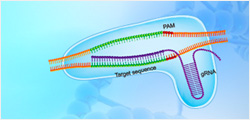IL-21R, His, Human
IL-21 and IL-21R were highly expressed in the lesional skin and peripheral blood of psoriasis patients. IL-21 promoted CD4 T cells proliferation and Th17 cells differentiation and inhibiting Treg cells differentiation by upregulating RORγt expression and downregulating Foxp3 expression, with increased expression and secretion of IL-17A and IL-22.Microbial translocation and the associated immune activation during HIV-1 infection may lead to high expression levels of the IL-21R activation marker in RM B cells, a feature associated with increased apoptosis and a reduced number of these cells in the circulation.
| ¥1500 | |
| Z05476-100 | |
|
|
|
|
|
|
|
|
|



































